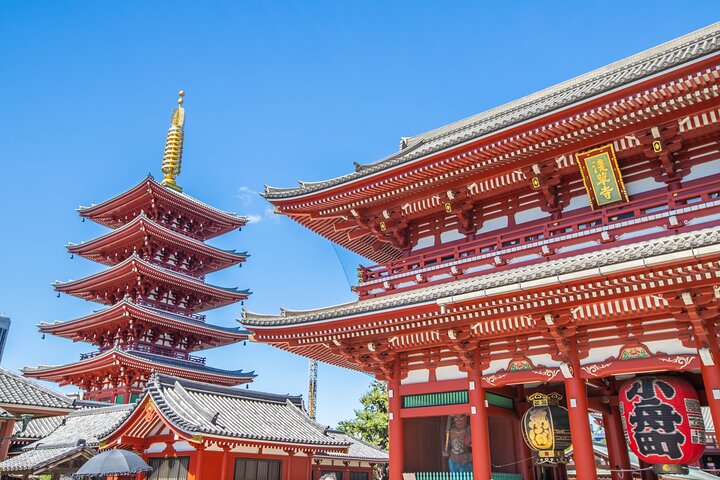Discover Hiroshima’s history and the reasons behind the atomic bomb. Visit Gokoku Shrine, Hiroshima Castle, and Peace Memorial Park on this insightful walking tour.
Discover Hiroshima’s history and the reasons behind the atomic bomb. Visit Gokoku Shrine, Hiroshima Castle, and Peace Memorial Park on this insightful walking tour.
- Hiroshimagokoku Shrine - Visitors begin their experience at Hiroshima Gogoku Shrine by exploring its elegant architecture and tranquil surroundings. Originally established to enshrine the protective deities of Hiroshima domain, the shrine now also serves as a place of solace and remembrance for those affected by historical events.
- **Hiroshima…
- Hiroshimagokoku Shrine - Visitors begin their experience at Hiroshima Gogoku Shrine by exploring its elegant architecture and tranquil surroundings. Originally established to enshrine the protective deities of Hiroshima domain, the shrine now also serves as a place of solace and remembrance for those affected by historical events.
- Hiroshima Castle - Hiroshima Castle, also known as Carp Castle, is a historic landmark in Hiroshima, Japan. Originally constructed in the 1590s, it served as the home of the daimyō (feudal lord) of the Hiroshima han (domain). The castle was an important military and administrative center until it was destroyed by the atomic bomb in 1945. It has since been reconstructed and now functions as a museum that offers insights into Hiroshima’s history, Japanese feudal architecture, and the samurai culture of the Edo period. The castle’s grounds, surrounded by a moat and lush gardens, provide a scenic walk and a peaceful retreat from the modern city surrounding it.
- Hiroshima Green Arena - Hiroshima Green Arena, officially known as Hiroshima Prefectural Sports Center, is a multi-purpose indoor sporting arena located in Hiroshima, Japan. It is often used for a wide range of sporting events such as basketball and volleyball matches, as well as for martial arts competitions. The arena also hosts a variety of other events, including concerts, exhibitions, and cultural festivals, making it a versatile venue within the city.
- Hiroshima Orizuru Tower - Orizuru Tower is a modern and innovative addition to Hiroshima’s cityscape, located right next to the Hiroshima Peace Memorial Park. Opened in 2016, this 13-story building is known for its distinctive architecture and the panoramic views it offers of the surrounding city, including the Peace Park and the A-Bomb Dome, one of the UNESCO World Heritage sites.
- Atomic Bomb Dome - The Atomic Bomb Dome in Hiroshima, originally the Hiroshima Prefectural Industrial Promotion Hall, stands as a solemn reminder of the devastating power of nuclear weapons. Located near the blast’s epicenter, it was one of the few structures left standing after the atomic bomb was dropped on August 6, 1945. This haunting ruin, with its exposed steel and crumbled walls, has been preserved as a peace monument and UNESCO World Heritage Site. It symbolizes the hope for global peace and the abolition of nuclear arms, serving as a poignant educational and contemplative site for visitors worldwide.
- Children’s Peace Monument - The Children’s Peace Monument in Hiroshima, located in the Peace Memorial Park, commemorates Sadako Sasaki and the thousands of child victims of the atomic bombing of Hiroshima. Inspired by Sadako, who developed leukemia from radiation exposure and folded origami cranes as a symbol of peace and healing, the monument features a statue of her holding a golden crane overhead. Surrounding the statue are thousands of colorful paper cranes sent from children around the world, symbolizing a universal wish for peace and the abolition of nuclear weapons.
- Hiroshima Victims Memorial Cenotaph - Hiroshima Peace Memorial Park is a poignant site dedicated to the memory of the victims of the atomic bomb dropped on Hiroshima on August 6, 1945. Located in the heart of Hiroshima, near the epicenter of the explosion, the park is home to several important monuments, memorials, and museums, including the Hiroshima Peace Memorial Museum, the Atomic Bomb Dome, and the Children’s Peace Monument.
The park itself is designed to promote reflection and peace, featuring lush greenery, tranquil water features, and broad pathways. It serves as a reminder of the tragic consequences of nuclear warfare and as a symbol of a continuing commitment to world peace. Each year, thousands of visitors from around the world come to the park to learn, remember, and reflect on the events of 1945 and the importance of peace.

- All fees and/or taxes
- All fees and/or taxes
Join us on a profound journey through Hiroshima to understand why the atomic bomb was dropped on this city. Our thematic tour covers three key sites: Gokoku Shrine, Hiroshima Castle, and the Peace Memorial Park. Each location provides unique insights into Hiroshima’s military significance during World War II, the strategic reasons behind its selection…
Join us on a profound journey through Hiroshima to understand why the atomic bomb was dropped on this city. Our thematic tour covers three key sites: Gokoku Shrine, Hiroshima Castle, and the Peace Memorial Park. Each location provides unique insights into Hiroshima’s military significance during World War II, the strategic reasons behind its selection as a target, and the devastating human and cultural consequences of the bombing.
Explore the historical and military context at Gokoku Shrine and Hiroshima Castle, and then reflect on the tragic aftermath and the enduring call for peace at the Peace Memorial Park. This tour offers a comprehensive look into the events leading up to the bombing, fostering a deep appreciation for peace and reconciliation. Join us to explore the profound impacts and the ongoing legacy of one of the most pivotal events of the 20th century.
For a full refund, cancel at least 24 hours before the scheduled departure time.
For a full refund, cancel at least 24 hours before the scheduled departure time.















